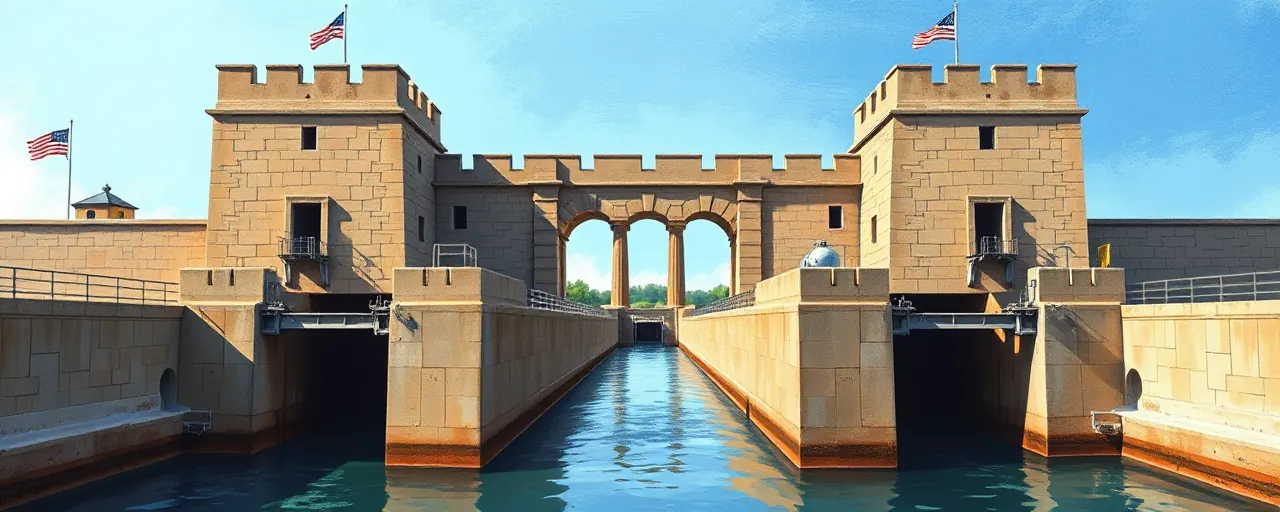A Jungle Tamed, A Border Secured
The Darién Gap, that lawless stretch of jungle between Colombia and Panama, has long been a gaping wound in America’s southern flank. Migrants, criminals, and chaos poured through, exploiting the treacherous terrain to dodge justice and flood northward. No longer. Panama, with a firm handshake from the United States, has slashed illegal crossings by a jaw-dropping 98 percent. Deputy Secretary of State Christopher Landau didn’t mince words in his April 4, 2025, call with Panamanian Foreign Minister Javier Martínez-Acha, praising Panama’s resolve to choke off this pipeline of disorder. This isn’t just a win for Panama; it’s a triumph for every American tired of watching our borders erode.
Let’s be real: the Darién was a disaster waiting to metastasize. Gangs preyed on desperate travelers, wildlife chewed up the rest, and the U.S. taxpayer footed the bill for the fallout. Now, with Panama’s jungle paths sealed and biometric scanners sniffing out criminals, we’re seeing results that matter. Only 408 migrants crossed in February 2025, down from numbers that once spiraled into the tens of thousands. President Trump’s immigration crackdown, paired with Panama’s backbone, proves that sovereignty isn’t a buzzword; it’s a choice. And Panama chose wisely.
Kicking the CCP to the Curb
While Panama was locking down its borders, it also delivered a gut punch to Beijing’s ambitions. The Chinese Communist Party’s tentacles, once wrapped tight around the Panama Canal through port concessions and Belt and Road schemes, are unraveling. Panama ditched the BRI in February 2025, and BlackRock’s $22.8 billion swoop on CK Hutchison’s port operations sent a clear message: this hemisphere isn’t for sale. Landau hailed Panama’s audit of Hutchison’s shady dealings, a move that could spark legal fireworks and further loosen China’s grip. The U.S. isn’t just cheering from the sidelines; we’re driving this shift, and it’s about time.
China’s play here was never subtle. Since cozying up to the PRC in 2017, Panama became a pawn in Beijing’s global chess game, with state-owned firms sinking roots into ports and bridges. Even now, Chinese equipment lingers like a bad guest, posing cybersecurity risks that keep SOUTHCOM brass up at night. Beijing’s March 2025 delegation visit was a desperate bid to cling to influence, but Panama’s waking up. With America’s backing, this audit isn’t just paperwork; it’s a declaration that the canal, a lifeline of global trade since 1914, won’t be a CCP chokehold.
The Naysayers’ Flimsy Case
Of course, the hand-wringers will cry foul. Advocates for open borders and globalist cheerleaders argue that sealing the Darién crushes humanitarian dreams, while others whine that pushing China out risks economic retaliation. Nonsense. The jungle wasn’t a yellow brick road to opportunity; it was a death trap exploited by cartels and traffickers. As for Beijing, Panama’s economy didn’t collapse when it cut BRI ties; it pivoted to partners who don’t peddle debt traps. The U.S.-Panama drug busts, nabbing over 80 tons in 2024, show what real cooperation looks like, not China’s strings-attached handouts.
History backs this up. When the U.S. handed the canal to Panama in 1999, the deal wasn’t to let foreign powers like China slink in; it was to secure a stable ally. The Monroe Doctrine’s spirit, dusted off by Trump’s America First push, demands we keep our backyard free of hostile meddling. Those bleating about lost Chinese investment forget that Panama’s prosperity hinges on the canal’s security, not Beijing’s bridges to nowhere. The evidence is in the numbers: migration’s down, China’s out, and Panama’s standing tall.
A Partnership That Delivers
This isn’t a one-off. The U.S. and Panama are locked in a strategic dance that’s paying dividends. From joint exercises like PANAMAX Alpha to Defense Secretary Pete Hegseth’s looming visit, we’re doubling down on a partnership forged in 1903 and battle-tested in 1989’s Just Cause. The canal’s safety, narcotrafficking crackdowns, and now a united front against China’s creep show why this alliance matters. Landau and Martínez-Acha didn’t just swap pleasantries; they recommitted to a vision where both nations thrive, not just survive.
Look at the stakes. The canal powers Panama’s economy and keeps global trade humming. Letting it slip into chaos or foreign hands isn’t an option. With Trump steering the ship, America’s flexing its muscle in the Western Hemisphere, not with apologies but with action. Panama’s on board, and the results, from jungle lockdowns to port purges, speak louder than any diplomat’s platitudes. This is what winning looks like.
The Road Ahead
Panama’s pivot isn’t a fluke; it’s a blueprint. Shutting down the Darién and sidelining Beijing prove that guts and grit can turn the tide against chaos and encroachment. The U.S. has Panama’s back, and together, we’re carving out a hemisphere where security and sovereignty aren’t negotiable. The nearly 98 percent drop in illegal crossings isn’t a stat; it’s a lifeline for communities tired of being overrun. BlackRock’s port grab isn’t just a deal; it’s a stake in the ground against CCP overreach.
We’re not done. Cybersecurity gaps from Chinese tech linger, and the audit’s fallout could shake things up. But the momentum’s ours. Panama’s not buckling under pressure; it’s rising to the challenge, and America’s right there with it. This is about more than one jungle or one canal; it’s about a future where our borders hold, our allies stand firm, and our enemies get the message. That’s a fight worth having, and we’re winning it.
